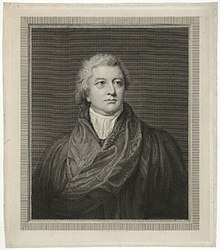Charles Burney (schoolmaster)

Charles Burney
Family and education

A native of London, he was the son of Charles Burney, a music historian, and his first wife, Esther Sleepe. He was a brother of the novelist and diarist Fanny Burney and the explorer James Burney, and a half-brother of the novelist Sarah Burney.
Burney was educated at
Usher, scholar and parson

In 1782, Burney became a master at a private school in Chiswick run by William Rose. He married Rose's daughter Sarah (1759–1821) in 1783. When Rose died in 1786, Burney took over the school, moving it to nearby Hammersmith and then to Greenwich in 1793.
Many eminent naval and military officers were educated there, but he seems to have been such a disciplinarian that he provoked a rebellion of about 50 boys at some time in the early years of the 19th century. One boy described it in an undated letter to his mother. The boys took food, chessboards, cards and weapons, and barricaded themselves in: "Then Burney came and told them to open the door but they said it was not shut to be opened. He then got a ladder & got at the top of the door where he could see them all... till at last as the door was going to be cut open they unfastened it, when Burney rushed in. At first they hit him with their sticks but he knocked them about till at last they were quiet & Burney very generously gave them the choice of being expelled or forgiven; above 40 were forgiven and 2 expelled."[1]
Burney transferred the school to his only child
Burney gained a strong reputation as a Greek scholar with several publications. He was elected a fellow of the Royal Society in 1802. He made his peace with Cambridge University, which awarded him an MA in 1808 on his ordination as an Anglican priest. He advanced rapidly in the Church of England, becoming rector of the rich living of Cliffe, Kent, and of St. Paul's, Deptford. He also served as a royal chaplain and as a prebendary of Lincoln Cathedral. He died of apoplexy, aged sixty.
Partial bibliography
- Appendix ad lexicon Graeco-Latinum a Joan. Scapula constructum (1789)
- Remarks on the Greek Verses of Milton (1790)
- Richardi Bentleii et doctorum virorum epistolae (1807)
- Tentamen de metris ab Aeschylo in choricis cantibus adhibitis (1809)
- Philemonos lexikon technologikon (1812)[2]
See also
References
- ^ The letter is quoted in The Journals and Letters of Fanny Burney (Madame d'Arblay), ed. Joyce Hemlow et al., Vol. 10 (Oxford: Clarendon Press, 1972-84), p. 796, note 6. The incident is mentioned in retrospect as "The grand school-rebellion" in an 1828 letter from Sarah Burney addressed to a half-sister and a niece: The Letters of Sarah Harriet Burney, ed. Lorna J. Clark, (Athens, GA/London: University of Georgia Press), Letter 112, pp. 273 and 276, Note 8.
- ^ "Charles Burney Jr (1757-1817)". www.mcgill.ca. Retrieved 6 June 2010.[title missing]
- Information has been taken from several websites.[1]
- ^ The Burney Centre, McGill University and The Royal Society. Accessed June 6, 2010.
